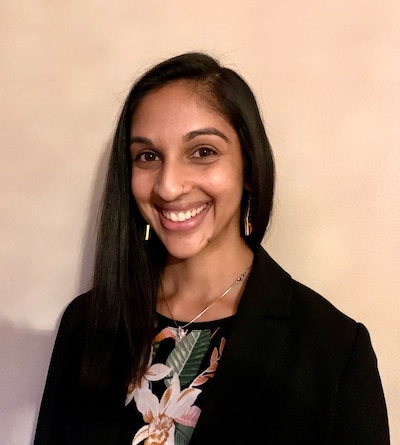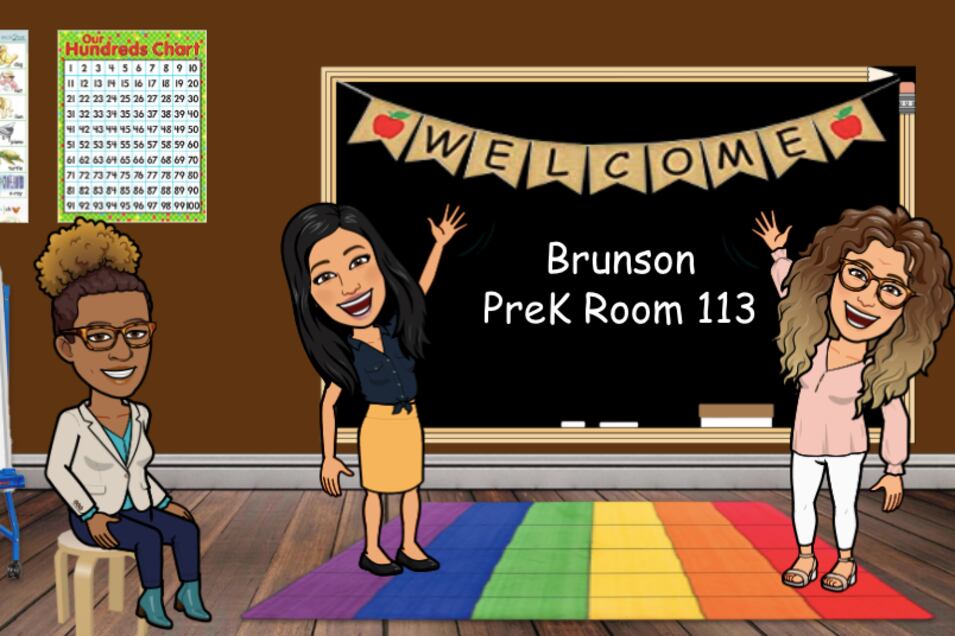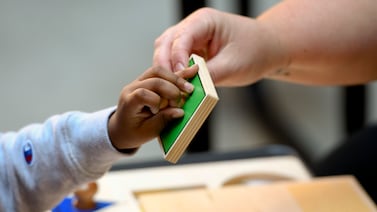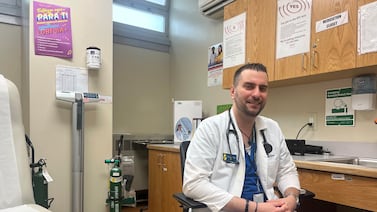Chicago prekindergarten teacher Margi Bhansali approached the first day of school this year with apprehension. Even with National Board Certification and a decade of classroom experience, she faced the daunting task of getting to know her 15 4-year-olds virtually.

But through weeks, and then months, of virtual learning, Bhansali prioritized welcoming parents and grandparents as well as her Brunson Elementary students — holding individual virtual meetings with families, creating monthly at-home learning packets, and even volunteering to troubleshoot technical issues with parents so they could upload their children’s work. She also focused on building bonds among the children on her screen, with games, show-and-tell, and songs that involve the children and their lives.
When one of her students invited her to a birthday party this fall, Bhansali knew she had succeeded in connecting with her class despite the distance.
Now she faces another transition, as Chicago plans to bring back prekindergartners and some special education students in January in its first reopening wave. Chalkbeat Chicago asked Bhansali what she has learned from this most unusual year, her favorite lesson to teach remotely, and her plans to give her physical classroom a COVID-era makeover.
This interview has been lightly edited for length and clarity.
Was there a moment when you decided to become a teacher?
I didn’t start college with the intention of becoming a teacher, I was actually a journalism major. My freshman year, I joined an AmeriCorps program called Jumpstart, where I worked in a Title 1 classroom, providing one-on-one instruction and supporting the classroom teacher for several hours a week.
I was paired with a bright-eyed 4-year-old girl, and we formed an instant connection. As the school year went on, I saw her academic skills skyrocket. The relationship I built with her and her family, as well as the impact I was able to make in her educational path, changed the course of my career and my life. From then on, I became an advocate for the underserved young children in our community. I believe that a high-quality prekindergarten experience can begin to bridge the educational gap, and that is why I became a teacher.
What does a typical day look like for you now?
Currently my district is fully remote, so a typical day is very different than in the past. I start the day by posting a “Question of the Day” on Google Classroom that is related to our current topic of study. Some examples include “What do you do with clothes you do not wear anymore?” and “How many trees can you see from your window?” Students then participate in a total of an hour of synchronous instruction during the day in both whole-group and small-group formats.
I also post a “Challenge of the Day,” which are activities that families complete at home during the day, such as making an instrument with materials from around their home, listening to the social-emotional podcast “Imagine Neighborhood,” and responding to the prompts, or reading a paired fiction and non-fiction text on the Scholastic Bookflix website and completing the games that go along with them. I am also available during the day to meet with individual families or students if they need extra support.
What challenges do you face teaching pre-kindergarten this year?
The biggest challenge I am facing is attendance. While I work hard to make our daily meetings fun and engaging, I understand that it can be difficult for the children to be on the screen for an hour. Every time a student misses class, I call home and/or send an email to follow-up with families. I also understand that my students are often being supervised by older siblings who are doing their own remote learning, and grandparents, who are unfamiliar with using the technology, so logging in on a daily basis is tough. I know many other educators offer incentives to children for attendance, but at the Pre-K level, attendance is more on the family and less on the child. I don’t want a child to feel left out or discouraged when they see classmates getting a “prize” when I know they could have done nothing differently to get themselves logged in more often.
The other big challenge is assessing students. At this age, many of my assessments take place in authentic, play-based settings. This is nearly impossible through the screen.
The other barrier I am coming across is families answering for their child. I understand that they want their child to “get it right” but this makes it difficult for me to know what their child can really do.
What has been your favorite lesson to teach remotely — and what about it works well?
My favorite teaching strategy during remote learning has been the “scavenger hunt.” I use it all the time across all content areas. I can tell the students to find something in their house that begins with the same letter as their name, that is shaped like a square, or comes in a pair. I’ve also incorporated this into our study topics. During our study of clothing, we looked for clothing with different types of closures, such as buttons, zippers, or buckles. We even did a Thanksgiving scavenger hunt, where the students found things the color of pumpkin pie and cranberry sauce. I really enjoy scavenger hunts because they get the kids up and moving around. It gives me a glimpse into their lives and helps to build relationships with the families because I get to know them better!
Tell us about your own experience with school and how it affects your work today.
School was always a place I enjoyed and looked forward to. I was the kid who was excited when summer break was over! I loved learning and socializing with peers — two things I am still passionate about. This means that even in my work today, I am always looking for opportunities to develop as a teacher and be in community with other educators. That is why several years ago I became a Nationally Board Certified Teacher through the Chicago Teachers Union’s Nurturing Teacher Leadership program, and I am currently a Teach Plus Illinois Early Childhood Education Policy Fellow.
This has been a challenging year. What do you hope school will look like at this time next year?
This time next year I hope to be teaching my students in person. I really miss seeing my students everyday and interacting with them! Remote teaching is just not the same, but right now I’m more concerned about everyone’s health and safety. By this time next year, I hope there is a widely available vaccine so that we can return to school without fear.
What’s the best advice you ever received — and how have you put it into action?
The best advice I’ve received was to make the classroom environment the “third teacher,” with the adults being the first and children being the second. I spend a lot of time intentionally setting up my physical environment to encourage communication and relationships. The classroom should invite children to explore, experiment, and make mistakes, with plenty of opportunities for open-ended play. I also make sure that children can have ownership of their classroom. They know where all the materials are and have autonomy to use them.
With CPS slated to return to in-person learning in January and the new requirements to keep socially distant, my classroom will look very different this year. My plan is to create “cubicles” with low shelves and individual materials at each student’s developmental level. The low shelves will allow for the children to talk to each other, but maintain proper distance.
Setting up classrooms with functional design and pleasing aesthetics that bring peace into a classroom is my secret passion. My dream job would be to be the designer on a “Classroom Makeover” show like the home makeover shows on HGTV!







